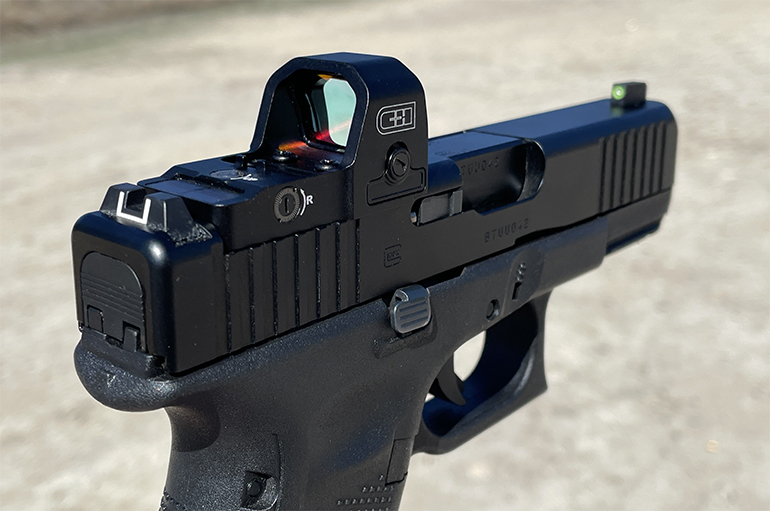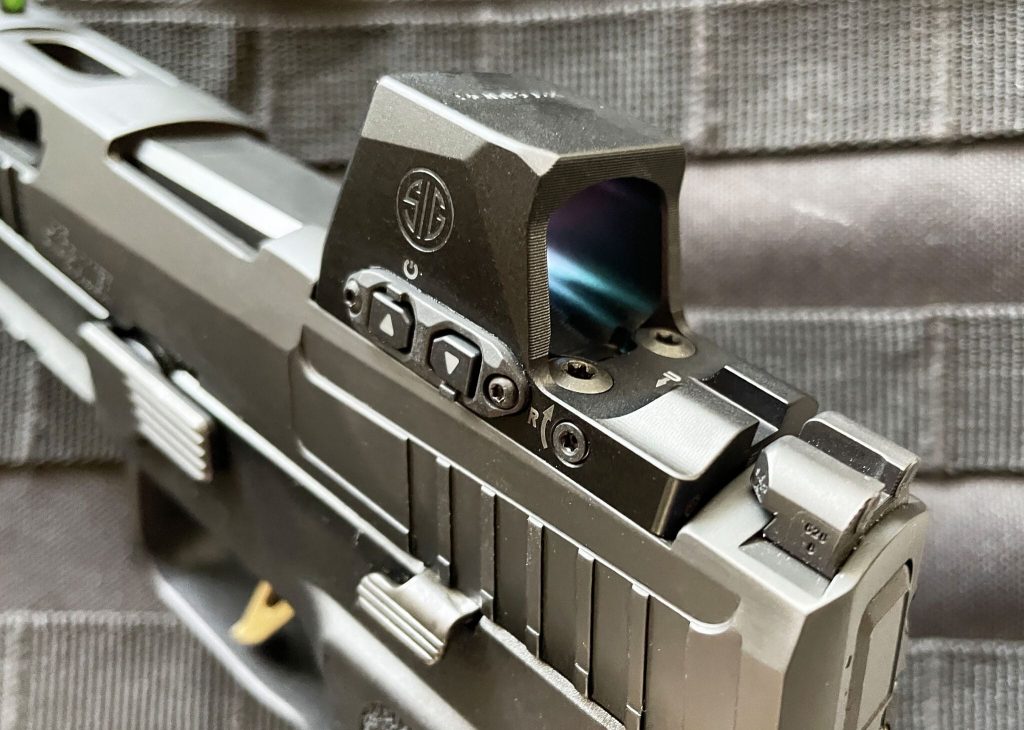
The wave of the pistol-mounted optics is sweeping across the law enforcement landscape nationally. Is that a good idea? I’m not sure that matters. PMOs are here to stay, regardless of the level of police agency adoption. The question that should be raised is, “What’s the smart way to do this?”
As an example, a police trainer is tasked with determining whether the agency issue of pistol-mounted optics is a smart move. An alternative is listing PMOs as an “approved modification” of agency-issued equipment, with the officer buying the optic, mounting and support gear and voluntarily undergoing transition training. Another alternative is leaving well enough alone and sticking with duty guns as issued.
Complicating this is a program like that from GLOCK. The company will provide some model of their service pistols milled for the agency-specified optic. The just needs to get the support gear (e.g., appropriate holsters, batteries, etc.) and training.
It’s not uncommon for agency employees to get a use study started with industry support, get part way through the various stages of the study, and then get the message to begin the purchase process before the study is even completed.
Other larger agencies have already done the studies, they’re told. Why reinvent the wheel?
That sounds reasonable. One possible objection is that it could be that the people running the larger department’s study “mailed it in” or rounded some corners. How will that going to look if your program goes wheels up due to an equipment issue? That becomes a critical problem if someone gets hurt.
And the costs are more than many think. You’ve priced the optics. You may have priced some of the incidentals. But did you calculate other potential costs? Do you have simulations-only guns, with the agency-approved optic on board, to use in force-on-force training?
Force-on-force is something strongly recommended by optics-specific trainers with experience as being necessary to “fireform” lessons learned on the square range. If you don’t do that, various issues including situational confusion and just plain missing the dot seem to arise.
How much does it cost to sort that out? One insider quoted a middle five-figure dollar amount just to sort out the total costs out for those “extras.”
The training itself is another expense, and it’s worthwhile. In checking with various sources, marginal qualification shooters have vastly increased their scores – not surprising with “new toys” – but also showed improvement in their gun handling skills.
That alone could be worth the expense of going to PMOs. But you need to be concerned with other issues, individual shooter issues.

As an example, one issue for some shooters is a visual convergence problem. Knowing how to deal with these various issues makes it critical you send your firearms instructors to instructor schools geared to PMO use and issues.
Just as with officer survival, tactical operations, and calculating the annual budget, considerable study, planning and preparation pay dividends. It minimizes the chance of marginal performance, injury to officers, suspects, and bystanders, and – if you’re smart – can save taxpayers money while increasing the competence of the troops.


The pic on top of the article seriously confuses me.
It’s labeled a GLOCK 19 Gen5, yet the slide release is on the right side. I thought the picture may have been simply inverted, but no, also on that side it shows the cutout for the magazine release button sits, so no, that’s correct.
Is Glock making left-hand frames with the slide release button on the opposite side of the frame?
Ambidextrous slide release is one of the new features on the gen 5 models.
My “example” set regarding observation of police (LE) handgun shooting scared me to the point that I left the range well before my allotted time slot expired. My estimate is the overall accuracy is “minuet-of-human…at best. Coupled with watching non-LE people swing their laser sights all over the place trying to line up the “perfect” head shot, I would judge shooting outcomes no better (at best) than newbies firing their guns for the first time. Thinking that LE rarely fire their handguns at ranges beyond the magic three yards, and that PMOs for LE are a waste of money.
And we have zero information about how many LE refuse to adequately maintain firearms, much less optics, properly to get the best chance of actually having PMO “turn on”, due to dead batteries (yes, batteries are supposed to outlast the human, but a misalignment of the PMO due to rough use (i.e. poor gun handling skills), or poor maintenance cannot be shucked off.
“And we have zero information about how many LE refuse to adequately maintain firearms, much less optics, properly to get the best chance of actually having PMO “turn on”, due to dead batteries (yes, batteries are supposed to outlast the human, but a misalignment of the PMO due to rough use (i.e. poor gun handling skills), or poor maintenance cannot be shucked off.”
As I understand it, the better ones are always on and have something like a 50,000 hour battery life, or about 5 years of always on.
Was my information in error?
I’m still not a fan of RMRs on handguns. TEHO.